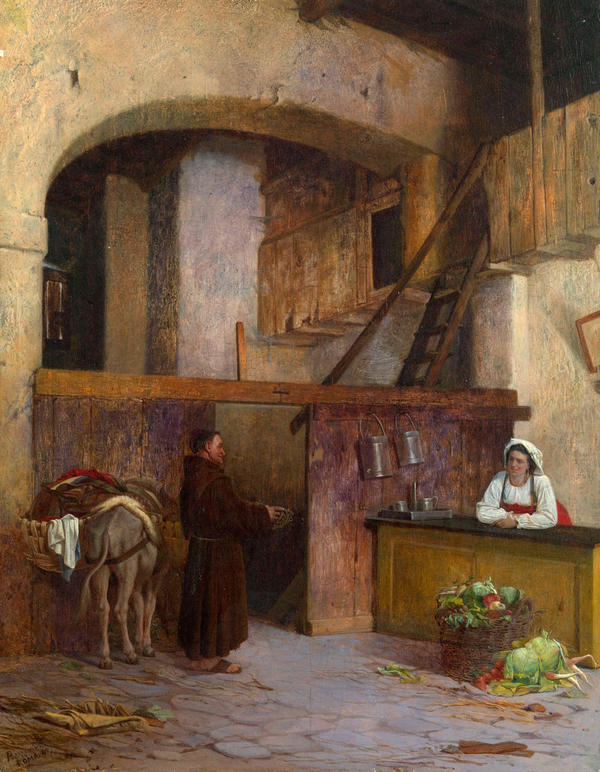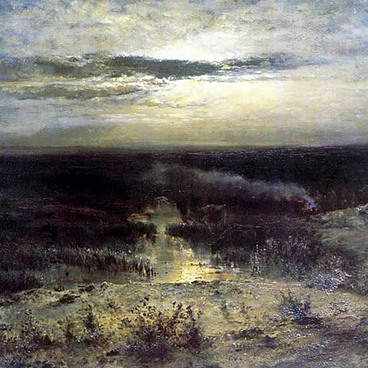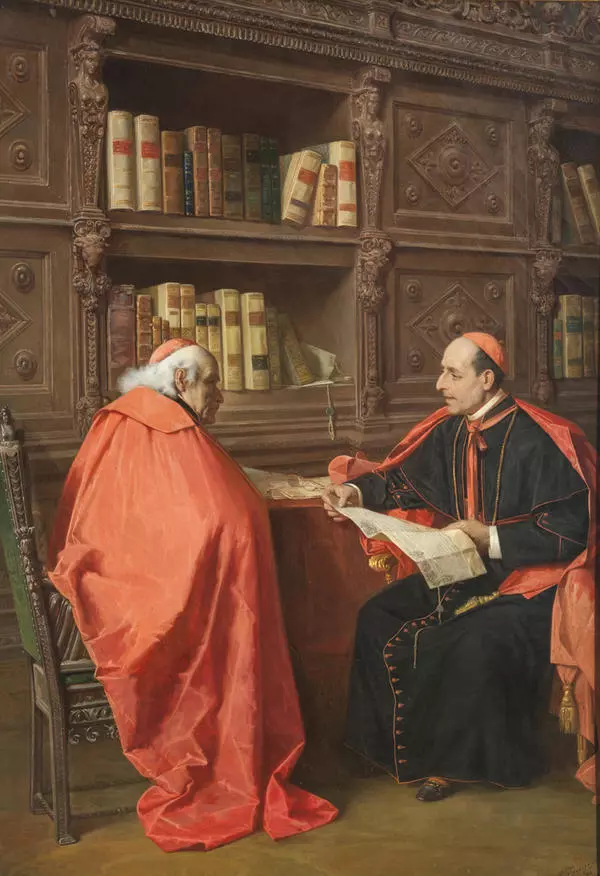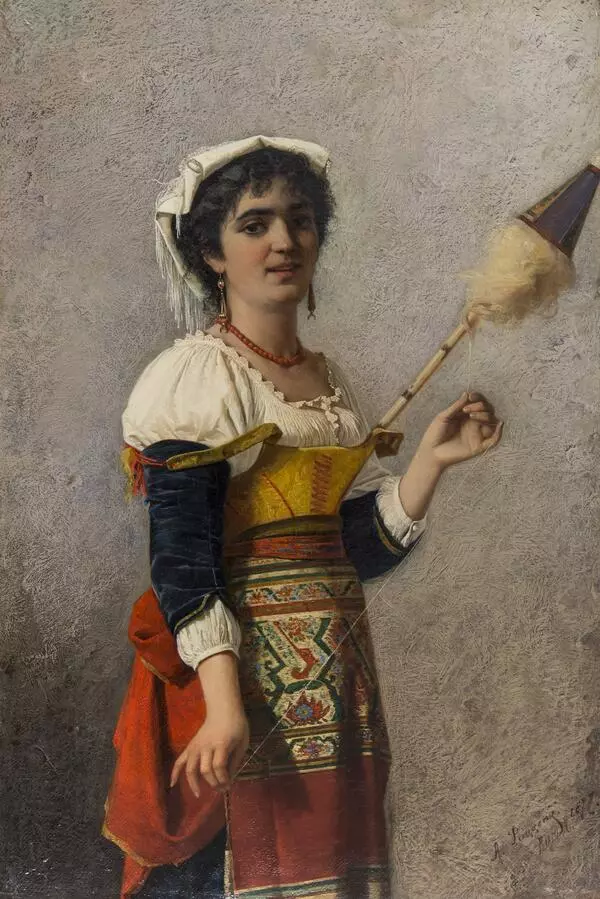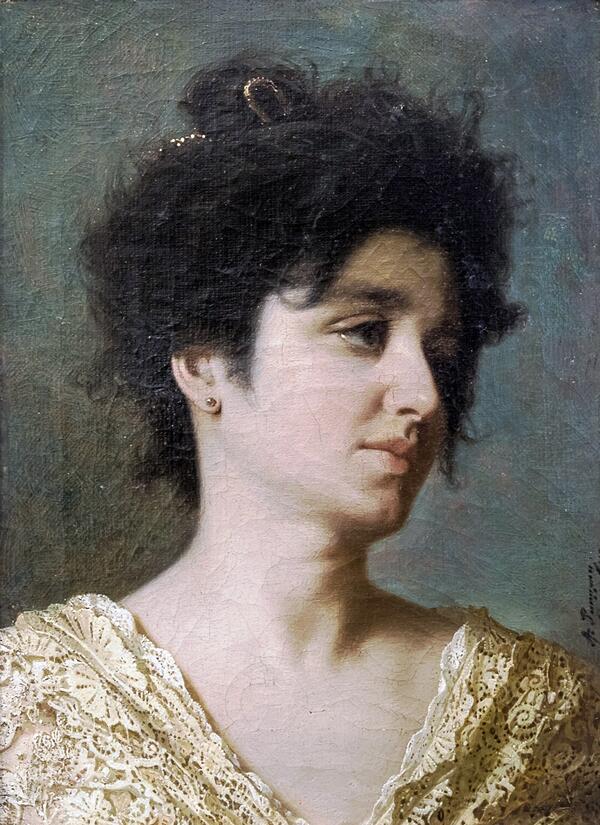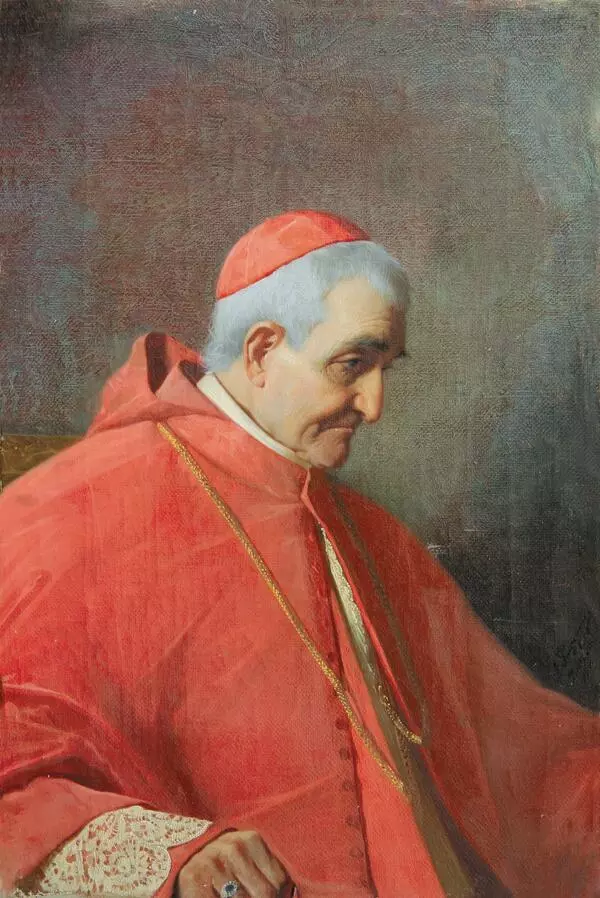Alexander Rizzoni was a Russian genre painter of Italian origin. He was born in Riga, in the family of an artisan. His elder brother Pavel, an Academician of Art, became his first teacher of fine art.
At the age of 16, Rizzoni entered, as an unenrolled student, the Imperial Academy of Arts, class of famous battle painter Bogdan Villevalde.
In the course of his studies, he earned a few Academy awards: small silver medal for painting At the Inn and a large silver medal for painting Italian Organ Grinder at the Inn. His genre piece Jewish Smugglers won a small gold medal, and painting Auction in a Livonian Village brought him a large gold medal and the right to go abroad as a pensioner of the Academy of Arts.
Rizzoni spent almost the whole period of his pension in Rome and, after its expiration, finally settled down there. He regularly sent his new pieces to the Academy or various exhibitions. For those works, the master was awarded the title of Academician and then – Professor of Art. He sometimes came to Russia personally to visit his relatives and friends.
In most cases, the artist created small, elaborately painted canvases. In terms of materials, he preferred thin wooden boards or plywood.
Rizzoni’s favorite subjects were scenes from the Italian people’s daily life, life of Catholic clergy and Jewish communities. All of them were staged in the interiors of taverns, shops, cardinals’ palaces, churches, monasteries, and synagogues. Beside genre paintings, he also created female portraits in the style of the so-called “heads”.
In Russia, Rizzoni had many enemies among young artists and critics of art. He was considered to be a commercial painter working for the market. Itinerants accused him of the lack of interest for the life of the Russian people and not painting scenes from the Russian everyday life.
In the Mir iskusstva (The World of Art) magazine published in June 1901, critic Alfred Nourok who wrote under the pseudonym “Silanius” called Rizzoni a retrograde and the worst of all modern painters. The 65-year-old artist took this article badly. In April 1902, he committed suicide.
The featured painting created by Alexander Rizzoni many years before the tragic event shows a corner of city backwater. A woman wearing a loose white blouse and an open corsage dress, with a shawl on her head, is standing at the counter. In the left part of the painting, we can see a man in a monk’s habit and a pack donkey. According to one version, it is a monastery cellarer who came to buy vegetables for the meal, according to the other one – a Capuchin monk gathering alms for the monastery.
At the age of 16, Rizzoni entered, as an unenrolled student, the Imperial Academy of Arts, class of famous battle painter Bogdan Villevalde.
In the course of his studies, he earned a few Academy awards: small silver medal for painting At the Inn and a large silver medal for painting Italian Organ Grinder at the Inn. His genre piece Jewish Smugglers won a small gold medal, and painting Auction in a Livonian Village brought him a large gold medal and the right to go abroad as a pensioner of the Academy of Arts.
Rizzoni spent almost the whole period of his pension in Rome and, after its expiration, finally settled down there. He regularly sent his new pieces to the Academy or various exhibitions. For those works, the master was awarded the title of Academician and then – Professor of Art. He sometimes came to Russia personally to visit his relatives and friends.
In most cases, the artist created small, elaborately painted canvases. In terms of materials, he preferred thin wooden boards or plywood.
Rizzoni’s favorite subjects were scenes from the Italian people’s daily life, life of Catholic clergy and Jewish communities. All of them were staged in the interiors of taverns, shops, cardinals’ palaces, churches, monasteries, and synagogues. Beside genre paintings, he also created female portraits in the style of the so-called “heads”.
In Russia, Rizzoni had many enemies among young artists and critics of art. He was considered to be a commercial painter working for the market. Itinerants accused him of the lack of interest for the life of the Russian people and not painting scenes from the Russian everyday life.
In the Mir iskusstva (The World of Art) magazine published in June 1901, critic Alfred Nourok who wrote under the pseudonym “Silanius” called Rizzoni a retrograde and the worst of all modern painters. The 65-year-old artist took this article badly. In April 1902, he committed suicide.
The featured painting created by Alexander Rizzoni many years before the tragic event shows a corner of city backwater. A woman wearing a loose white blouse and an open corsage dress, with a shawl on her head, is standing at the counter. In the left part of the painting, we can see a man in a monk’s habit and a pack donkey. According to one version, it is a monastery cellarer who came to buy vegetables for the meal, according to the other one – a Capuchin monk gathering alms for the monastery.

